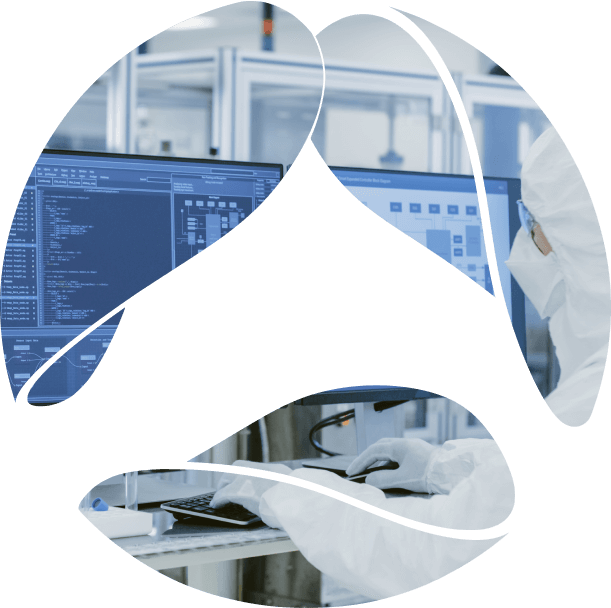In 2021, Cloud services will be a vast enterprise. According to Gartner, global spending on public cloud services is forecasted to reach $332.3 billion, 23.1% higher than in 2020. The enormous popularity of cloud solutions causes such market growth. In 2021, 94% of businesses will take advantage of cloud services. The emergence of such cloud technologies as virtualization and containerization enforces the appetite for cloud computing in healthcare. Both technologies are helpful for the healthcare sector as well.
Types of cloud computing
Clouds are different. They vary in the distribution model, infrastructure blueprint, and services provided. None of them is universal, and each evolved to meet a specific business’s requirements.
The Cloud services may be designed as three main cloud-based architectures: private, public, or hybrid.
- A private cloud denotes an infrastructure owned and exploited solely by one organization. A private cloud is usually physically located in the company’s facility. Such clouds are typically built for organizations with high security and stability demands. Those could be government units, the military, banks, and healthcare institutions.
- Public clouds are operated and maintained by third-party vendors. While using public cloud services, customers pay only for CPU cycles, bandwidth, and the storage they consume. A regular web browser is just enough to access a public cloud’s services.
- Hybrid clouds are a mix of private and public ones bound together by technology, granting a seamless data flow between applications. A combination of public and private cloud systems makes a business more agile and helps to organize the data security and compliance of the infrastructure.
The current state of the global network allows public cloud operators to provide almost any Internet service, including software, on-site data centers, management infrastructure, platforms, and desktops.
Software-as-a-Service (SaaS)
SaaS is a mechanism for delivering applications via the Internet. It is convenient to receive a working instrument without installing and setting up programs other than a web browser. A powerful computer is also excessive. All of the computations are made on the provider’s servers. The middleware and app data are also in the provider’s data center. The most apparent examples of SaaS tools are email and office applications.
In healthcare, SaaS applications include clinical information systems (picture archiving and communication systems and electronic health records) and nonclinical systems (supply chain, billing, internal communication, patient relation management). To operate, an average hospital requires several such applications. According to the Spok survey, 63% of healthcare organizations use six or more SaaS apps. Forbes forecasts that the global market of medicine SaaS will grow to $51.9 billion by 2024.
Infrastructure-as-a-Service (IaaS)
IaaS is the most basic strategy for exploiting the cloud. With an IaaS approach, the customer rents only the infrastructure: computing devices, storage facilities, and networking resources. IaaS lets you bypass the nightmare of procurement and installation of hardware components of a data center and relieves aids for improving healthcare services. Implementation of the IaaS is the most straightforward scenario of digital transformation. The IaaS lift-and-shift migration to the cloud may be performed in the shortest time requested. No refactoring of the underlying architecture is required.
Platform-as-a-service (PaaS)
PaaS provides software engineers a complete environment for developing and deploying their products. Like IaaS, PaaS provides the infrastructure, development tools, business intelligence, database management systems, and much more. If you plan to develop enterprise healthcare software, consider the cloud as your primary production platform. PaaS provides all of the resources to maintain the complete lifecycle of an application: building, deploying, testing, debugging, support, and modernization.
Desktop-as-a-Service (DaaS)
DaaS cloud vendor provides the client with the virtual desktop licensed with a per-user subscription. The provider takes responsibility for the backend management, which includes data storage, backup, updates, and maintenance. The benefit of DaaS is the reduction of downtime for IT support. By providing remote IT assistance to the employees, system administrators resolve issues much quicker than with the on-premise infrastructure.
Now when you are acquainted with the types of clouds, let’s study the advantages and disadvantages of various cloud computing solutions.
Pros of cloud technology
There are many benefits of applying the same cloud strategy for healthcare. These include saving resources, increasing the scalability of the infrastructure, better communication and data transfer between stakeholders, data interoperability, the potential for telemedicine, and access to powerful analytics.
Lowering the costs
By purchasing the Cloud Computing power, healthcare providers eliminate the need to upgrade their hardware and servers, which is usually expensive. The Cloud services provider generally covers the spending for the modernization of software and hardware. Since you only pay for the resources you use, the number of costs saved is enormous.
Marco Meinardi, Research Director within Gartner for Technical Professionals, calculated that switching from on-premise infrastructure to the Cloud one may save up to 50% of the total cost of ownership. Reducing IT costs as the main reason for switching to cloud-based healthcare solutions was mentioned by 3 of 4 respondents to the Spok survey.
Higher scalability
Since the computing facility is owned by a primary cloud service provider already, who always has the free capacity, it’s much easier to scale the infrastructure with the Cloud than with the on-premise. All you need is to purchase more computing power and storage. No additional expenses on transportation, installation, and set up of the hardware and software are required.
Better communication and information exchanged
With the healthcare cloud application, the conduction of global clinical trials became a reality. Since more than 4.5 billion people are connected to the Internet, doctors receive a rare opportunity to gather data points from tens of thousands of unique testing participants.
Convenient Interoperability
Integrating data throughout the healthcare system, regardless of where it was created, is essential for healthcare to work. Experts from different institutions should be able to read, modify, and process the data. With the on-premise infrastructure, data interoperability, and patient experience were hard to achieve when every organization used different software versions.
The use of Cloud infrastructure helps to make the data more coherent. Since all of the data is stored in one place – the Cloud- healthcare providers, as well as patients and stakeholders, can quickly access information from different sources.
Access to powerful analytics
Healthcare data is a considerable asset that requires robust computers to be processed. While the traditional on-premise model deprived many of such luxury, Cloud computing provides almost limitless possibilities to analyze data. Computer analysis of medical information has proven to be precise and accurate, in some cases, even more than one performed by a human specialist.
For example, Cloud-based AI is successfully applied for the screening of tuberculosis. By interpreting the chest X-ray, the AI-based tool developed by Google detected active pulmonary tuberculosis cases with false-positive and false-negative detection rates similar to fourteen trained radiologists. The other peculiar example of integrating cloud-based neural networks in health care refers to studies of sleep disorders. The neural network appeared more accurate in interpreting polysomnography than any individual specialist. The score of the program was 87% versus consensus.
Healthcare cloud computing risks
Despite cloud computing being a great tool to advance the healthcare system, some risks motivate doctors to treat the cloud with precautions.
Security Concerns
The same feature of remote access to medical data that facilitates telemedicine care also brings the threat of data disposal by hackers, who are incredibly aggressive these days.
According to Sophos‘ The State of Ransomware Report 2021, 37% of organizations were attacked by hackers, and in 54% of cases, the data was encrypted by cybercriminals. To protect their citizens’ sensitive information, government organizations prepared a set of demands for the cyber safety of cloud healthcare applications. Those standards are stringent, and only a few developers can meet them.
System Downtimes
Although the cloud environment is more reliable than on-premise infrastructure, downtime may also happen. To minimize the risk, a company should develop a downtime recovery strategy and invest resources in the backup facility. With clever planning, the idle time may be decreased significantly.
Hard to predict expenses
Since, with the cloud infrastructure, the client pays only for the resources used, the spending on IT may vary from month to month. Although such a model usually saves costs, the expenses may exceed the planned limit when more computing power is required. Such fluctuation in spending may be inconvenient for some businesses that need more flexibility in budget planning.
Cloud computing in healthcare
Although cloud computing is a relatively fresh technology, its impact on the healthcare industry is already huge. It facilitates medical research, improves the quality of healthcare services, and optimizes healthcare management.
Clinical trials
Almost limitless resources of cloud computing architecture and the centralized management of data are handy for clinical trials. A unified platform for recording feedback speeds up the initial concept evaluation phase since the opinions are stored in the same place and may be easily shared with all stakeholders.
The advantages of centralized collaboration were revealed even more during the protocol development stage. Because of the remote accessibility of the database, it is possible to conduct the trial in different geographical locations, affecting the research’s precision. The other significant outcome of exploiting the centralized platform is the coherence of the data received.
Big data
One of the cloud-related disruptors that have revolutionized the medical industry is big data. Insights derived from extensive data analysis are applied at every step of the healthcare cycle: diagnostics, modeling, and forecasting of outcomes, real-time tracking of a person’s vitals, and treating complex diseases. The knowledge received from the big data analysis allows ensuring the proper patient care at the right time from the right provider for a fair price.
Big data insights are also helpful for investment planning as they reveal new promising therapies and approaches in medicine. The various healthcare companies and institutions must run the research to receive those insights. Several companies provide cloud computing consulting and data analysis services.
Healthcare management
Healthcare is more than just medical treatment. Delivery of quality services also requires clever planning of the supply, use, and distribution of medical resources, and the cloud may help to complete those tasks. Google Cloud’s Intelligent Vaccine Impact solution (IVIS) is a bright example of healthcare cloud management software. One of the aims of the system was to schedule vaccination for 4 million citizens of Arizona and provide predictive analytics to forecast the trajectory of the COVID-19 virus.









